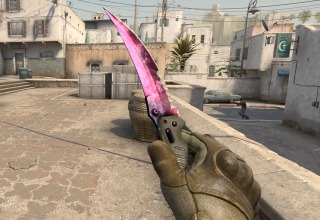
Originally when writing this review, I was doing it under cover of darkness. Load shedding had just hit our town that evening, as expected for our 19:00-21:30 time slot, and I’d run out of battery power on my phone during the day working a local market stall. I sat down to use the Swift 5 with my phone as a hotspot, and the next two hours whiled away as I started taking notes and browsed Reddit. Estimated battery life to begin with? Nine hours. Battery life when power returned? Seven hours. I wasn’t even surprised, because I’ve grown to expect that Acer’s hardware is exactly this reliable.
I say this because Acer has perfected the ultrabook, and there are few places left for them to improve now that the low-hanging fruit has been harvested. The early Swift devices had middling battery life and okay-ish SSD performance. The keyboards were OK. The displays were TN panels that were adequate. But it didn’t take them long to figure out the formula. The result is what we have here today – a textbook ultrabook designed to be a reliable workhorse. I’ve recommended Swift 5 notebooks for years to anyone looking for something good, and Acer even knows their target audience well enough that Linux compatibility is tested before launch.

The 2018 Swift 5-514 is a 14-inch notebook weighing a mere 930 grams (almost half the original Ultrabook specification from Intel), and re-uses the familiar clamshell design we’ve had for years. It’s very thin, but not Swift 7-levels of thin. The slight bulges and tapered edges give the impression that it is thinner than it actually is, and while carrying it around in your hand it feels like it’s barely there.
The lightness comes from using less materials inside the chassis and as part of the chassis itself. The hinges, for example, are smaller and lighter. There’s a lot of empty space internally that could have been filled by more battery cells, or another M.2 drive. There isn’t a solid steel retainer for the keyboard. This means that while the Swift 5 isn’t Swift 7-levels of thin (where holding it in the corner separates the trackpad from the chassis), it does twist and flex much more than you’d expect. Whether that stands the test of time is something I can’t comment on, because it is otherwise beautifully designed and elegantly presented.

My review unit came in a Midnight Blue and Gold colour scheme, and it looks fantastic. The shell and lid are made of aluminium, and it’s been coated with a matte powder finish that’s fine to the touch. The gold lettering is more of a copper colour, but it would be difficult to match the colour on the hinge cover which is also aluminium, which bears the traditional stamped lettering for the Swift family. The edges of the ultrabook are very lightly chamfered to remove sharp angles, and Acer has done away with chamfering down to the underlying aluminium layer, which is a better look overall.
The left side of the ultrabook is bereft of any ports aside from the Kensington lock and a combined 3.5mm jack. This has implications for the notebook’s usability, but it’s intentionally done because the Swift 5 still features active cooling. There’s a fan located on the left underneath the keyboard, and heat is vented up through a grille by the hinge on the left. Slightly warm air can be felt if you put your fingers near it in typical workloads like watching videos or working on documents, but Acer has designed the hinge to stop air rushing out the vents from warming up the display. This isn’t the notebook to be editing video on because it will throttle somewhat.

On the right side of the notebook, we have, from left, a USB 3.1 Gen 1 Type-C port, two USB 3.1 Gen 1 Type-A ports (the left-most one with device charging), one HDMI 1.4a port, and the proprietary charging port. The charger is a 45W unit and the battery is a two-cell 36Wh unit, which means it should charge from around 10% to full in an hour (which was a Godsend during load shedding, lemme tell you). Although the USB port with charging works with the notebook off, it only delivers 1A to devices, so there’s no quick charging for you. The 36Wh battery is the first sign of Acer’s cost-cutting measures with this unit, as yesteryear’s units had 56Wh batteries.
Look closer at the picture, by the charging port. On the lid, there’s a very small dent. This is the second sign of Acer’s cost-cutting. The aluminium lid is great, but it dents easily with the slightest knock on other surfaces because the metal is rolled so thinly to reduce weight. If you get one, buy a skin or a case for the lid to protect it.

The Swift 5 can’t be opened by one hand due to the hinge’s pressure, so two hands are always required. And because it’s so damn light it easily flips over if you’re not paying attention when adjusting the lid. Piling things on, there’s also nothing to grab onto when opening the notebook. You have to use a fingernail or opposing thumbs to get a crack at it.
Opening up the ultrabook reveals a nicely spaced keyboard deck with white backlighting and gold lettering, undersized arrow keys, an integrated power button, and a mostly centred and generously sized trackpad. The speakers are located beneath the notebook, firing sound downwards and reflecting it towards you. They’re OK, but you’re better off using headphones.
The trackpad uses Windows Precision Drivers, so it’s quite accurate in most respects and almost as accurate as Apple’s trackpads on their MacBooks. There’s very little acceleration and it’s quite responsive. A fingerprint reader is located to the right underneath the arrow keys, but the drivers for it aren’t available on Windows Update, something I ran into when doing a clean install to Windows 10 1809 out of the box. You have to get them from Acer’s site if you reinstall Windows 10.
Internally we have an Intel Core i5-8250U with four cores and hyperthreading, 8GB of LP-DDR3 RAM, a 256GB Micron 1100 SATA M.2 drive, dual-band Intel AC-7265 Wi-Fi 5 support, Bluetooth 4.2, and support for technologies like Miracast to connect to wireless displays. Connected Standby isn’t supported, but it wakes from sleep really, really fast. In terms of Linux support Acer has recently updated the BIOS to offer better compatibility with Linux distributions, so you should have no trouble slapping Ubuntu, or Fedora, or Solus on this thing.

The keyboard is stock standard Swift family fare. These have always been one of the nicest keyboards Acer makes, and that continues here. Travel is limited, but there’s still enough throw to make feel like you’re actually typing on something responsive, and there don’t seem to be any ghosting issues. CTRL and FN are in their correct places, and the SHIFT and ENTER keys are properly sized. The layout is also comfortable enough for those of you who use one thumb to move the cursor while typing or navigating the UI.
There are, however, two minor issues with the keyboard. One is that the labels for the arrow keys which double as brightness controls are switched. All EMEA models seem to have this, which is weird because Acer’s manual has the brightness control images flipped. The other is Acer’s default timer to turn off the keyboard backlight is 30 seconds. When you’re sitting back to read your angry rant post to social media, and the keyboard darkens, you have to press something to bring back the lighting. It’s not like it consumes that much more power to have the backlight on permanently.
While we’re on input devices, it’s time to talk about the display.

There is a touch panel on all Swift 5 units, but it’s not an ideal solution. Acer uses a Gorilla Glass pane to protect the display on the Swift 7 but they’ve also eliminated bezels on that model, making it easier to keep clean. This Swift 5 uses glass as well, but friction levels are just slightly too high and the glossy surface is somehow more difficult to keep clean even with proper screen cleaner. It helps with things like scrolling and pinch to zoom and doodling, but I wouldn’t rely on it for much else.
The display is a glossy IPS panel with a native resolution of 1920 x 1080 pixels. The gloss comes courtesy of the top glass layer, but this wouldn’t be a problem if the display was brighter. Outdoors, even in shade, it’s almost impossible to make out what’s going on. Indoors in controlled lighting situations, the colours are eye-popping and the black levels are good and deep.

Continuing on the usability front, the port layout on the right is quite decent. I’m able to plug in everything I’d normally use in all at the same time and there were no spacing issues. I only wish the USB-C port supported power delivery for devices that support Quick Charging mechanisms. Notebookcheck’s review of the Swift 5 included a view of the internals where they showed ample amounts of empty space inside the notebook not taken up by anything, and I think they could stand to have put at least one other USB-C port on the left-hand side. I say this primarily because…

It can get a little crowded when you’re working with a lot of stuff. It’s not difficult to run into a scenario where your mouse takes up one port, your flash drive another, and you need to use a USB-C hub to plug in an external drive. You could solve this by using a USB-C dock in locations where you’re most likely to be working and plug all this in, but since the dock won’t charge the Swift 5 you’re always stuck carrying a charger with you. It would have been simpler if this was a single-cable solution where I could dock and undock as needed to external storage and power to charge the battery.
And there’s a weird quirk that I’m not sure is limited to just my review unit, or other shipping devices as well. With my wired or wireless mouses plugged in alongside my external 1TB drive, transferring anything from or to that drive would have my mouse lagging and the cursor sticking as the transfer was taking place. I didn’t update the shipping BIOS so it may be a glitch, but it’s still something you should look out for.
Capping things off, I think there’s a lot that’s good about the Swift 5 that makes it worthy of a recommendation to the right person. The quality IPS display should be good enough for casual photo editing, and the quad-core processor and 8GB RAM should be enough for light video editing as well. The glossy display layer and the weaker shell means that while it’s a portable device, it probably isn’t suited to every environment, and may be best used in an office environment. The fact that it’s under one kilogram and still has proper Type-A ports is a testament to how much weight Acer can shed from their designs and still deliver an ultrabook that feels premium.
It should be on your shortlist, especially now that the 2019 Swift 5 is just around the corner, cramming a 15.6-inch device into a very slightly larger chassis with the same good looks. That should be a killer device as well.
Last Updated: April 17, 2019
| Acer Swift 5-514 Ultrabook | |
|
Acer's exceedingly light ultrabook in the Swift 5 family is lighter than last year's Swift 7, but it may be too light for some. Overall it is a potent, portable workhorse as stylish as it is functional.
|
|
|---|---|






















